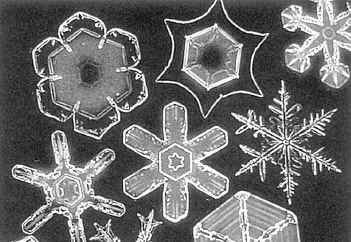
Date:09/01/2003 URL: http://www.thehindu.com/thehindu/seta/2003/01/09/stories/2003010900040200.htm
Fractals add new dimension to electronics

Often fractals are self-similar — each small portion of the fractal can be viewed as a reduced-scale replica of the whole.
FRACTALS ADD a new dimension to electronics. People most often see fractals in the familiar, irregular branching shapes of nature — leaf, or tree, or snowflake. Fractal, in mathematics, is a geometric shape that is complex and detailed in structure at any level of magnification. Often fractals are self-similar — that is, they have the property that each small portion of the fractal can be viewed as a reduced-scale replica of the whole. A repeating pattern of ever-smaller branches gives these structures a unique profile that defies classical geometry.
Now a study suggests that magnetic fields can take the form of fractals too if a magnet is made of plastic molecules that are stacked in parallel chains.
"The materials currently used in magnetic devices — for example, computer hard discs or identity card strips on credit cards — behave like 3D magnets," said Arthur Epstein, director of the Centre for Materials Research at Ohio State University. Epstein and long-time collaborator Joel Miller, professor of chemistry at the University of Utah, described the study in the journal Physical Review Letters. "As the spatial dimensions decrease, the magnetic dimensions of the materials may take on fractal values."
Mathematically, fractals are considered to exist in partial, or fractional, dimensions. That means if a device produces a magnetic field that exhibits fractal behaviour, the magnetic field would not posses dimension equal to a whole number — such as one, two, or three dimensions — but rather a fractional value such as 0.8 or 1.6 dimensions.
Epstein and his colleagues modelled the behaviour of a plastic magnet. It consisted of a hybrid material, a compound of manganese tetrapheynlporphyrin and tetracyanoethylene. Theoretically, this compound can form polymer chains that are one-dimensional.
The researchers modelled the behaviour of the material as it was magnetised and then cooled to a critical temperature where it began to behave as a special kind of glass. At very low temperatures the magnetic field of the material appeared to exist in 0.8 dimensions. As it cooled a little further, it gradually became one-dimensional, then finally settled at 1.6 dimensions.
© Copyright 2000 - 2005 The Hindu